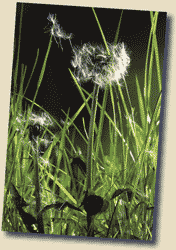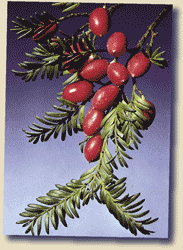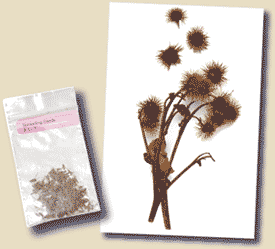|
||||||||||
|
||||||||||
| Questions/instructions: Ka körerorero täua me pëhea e tiria ai ëtahi momo purapura ki te whenua.In this activity we’ll be talking about how different seeds are spread. |
||||||||||
| |
%
responses |
|||||||||
|
||||||||||
| 1.
Ki töu whakaaro ka pëhea te tiritiria o ngä purapura o
te tohetaka ki te whenua?
How do you think the dandelion’s seeds are helped to spread? |
wind
|
70 |
||||||||
|
Ki te kore te äkonga e whakautu, mäu
e whakamöhio atu, mä te pupuhi o te hau ngä purapura tohetaka
e tiritiria ai. If necessary tell student that dandelion seeds are spread by the wind. |
||||||||||
| 2.
He aha te tino ähua o te purapura tohetaka e pai ai te tiritiria
e te hau? What is special about the way dandelion seeds are made that help them get spread by the wind? |
lightness
|
23 |
||||||||
fluffy
bits to get caught by wind |
9 |
|||||||||
parachute/umbrella
effect for landing |
6 |
|||||||||
| 3.
He aha tëtahi ähuatanga pai o te tiri purapura mä te hau? What might be good about seeds being spread by the wind? |
can
travel a long way/land in good growth environment |
2 |
||||||||
other
valid, well-explained reason |
0 |
|||||||||
|
||||||||||
| 4.
Ki töu whakaaro ka pëhea nei te tiritiria o ngä purapura
miro ki te whenua? How might the seeds of the miro berry be spread? |
eaten
and spread in bird or animal droppings |
4 |
||||||||
eaten
by animals/birds |
13 |
|||||||||
by
animals/birds |
0 |
|||||||||
| Ki
te kore te äkonga e whakautu, mäu e whakamöhio atu, ka
kainga e te manu me ëtahi atu kararehe, ä, ka tiritiria mä
te tuku tütae. If necessary tell student that miro berry seeds are sometimes eaten by birds and other animals and the seeds are spread in the droppings. |
||||||||||
| 5.
He aha te tino ähuatanga o te purapura miro e pai ai te tiritiria
mä te tütae manu, tütae kararehe kë ränei? What is special about the way berry seeds are made that help them get spread by birds or other animals? |
colour
to attract bird |
2 |
||||||||
nice
flavour, good food |
7 |
|||||||||
hard
seeds that survive being eaten/digested |
0 |
|||||||||
| 6.
He aha tëtahi ähuatanga pai o te tiri purapura mä te tütae
manu, tütae kararehe kë ränei? What might be good about seeds being spread in bird or other animal droppings? |
can
travel a long way/land in good growth environment
|
8 |
||||||||
droppings
fertilise seeds |
2 |
|||||||||
other
valid, well-explained reason |
0 |
|||||||||
|
||||||||||
| 7.
Nö te whänau o te tipu hutiwai ënei purapura.Ka pëhea
nei te tiritiria o ënei purapura ki te whenua? These seeds belong to the bidibid family. How do you think bibibid seeds are spread? |
caught
on moving creatures
|
6 |
||||||||
| Ki
te kore te äkonga e whakautu, mäu e whakamöhio atu, mä
te whakapiri atu ki te kiri kararehe, ki te käkahu tangata ränei
ngä purapura hutiwai e tiritiria ai ki te whenua. If necessary tell student that the seed clings to animals or clothing. |
||||||||||
| 8.
He aha te tino ähuatanga o te purapura hutiwai e pai ai te tiritiria
mä te whakapiri atu ki te kiri kararehe, ki te käkahu tangata
ränei? What is special about the way bibibid seeds are made that help them get spread by clinging to fur or clothing? |
hooks/barbs
grab stongly onto fabric/fur (hard to get off)
|
0 |
||||||||
prickles/spikes
get into fabric/fur (but relatively easily brushed
off) |
13 |
|||||||||
| 9.
He aha tëtahi ähuatanga pai o te tiri purapura mä te whakapiri
atu ki te kiri kararehe, ki te käkahu tangata ränei? What might be good about being spread by clinging to animal fur or clothing? |
can
travel a long way/land in good growth environment |
4 |
||||||||
other
valid, well-explained reason |
2 |
|||||||||
| 10.
He aha tëtahi ähuatanga e kore ai e pai te tiria o te purapura
mä te hau, mä te tütae manu, mä te whakapiri atu ränei
ki te kiri kararehe? What might be not so good about seeds being spread by the wind, in animal droppings or on animal fur? |
a
lot end up in places where they won’t grow well |
0 |
||||||||
they
are a nuisance; end up in places where they are not wanted |
4 |
|||||||||
Total
score: |
11
–16 |
0 |
||||||||
| 8–10 |
0 |
|||||||||
| 5–7
|
10 |
|||||||||
| 2–4
|
34 |
|||||||||
| 0–1
|
56 |
|||||||||
| Commentary: Most students had very limited understanding about how features of seeds help their spread. |
||||||||||
| |
||


